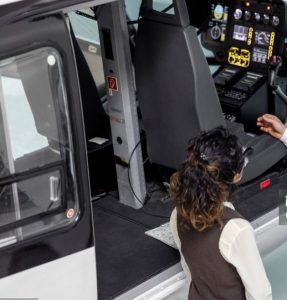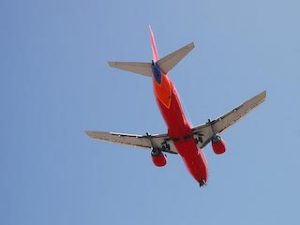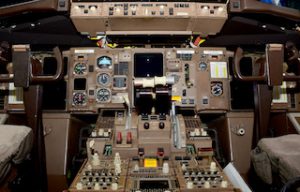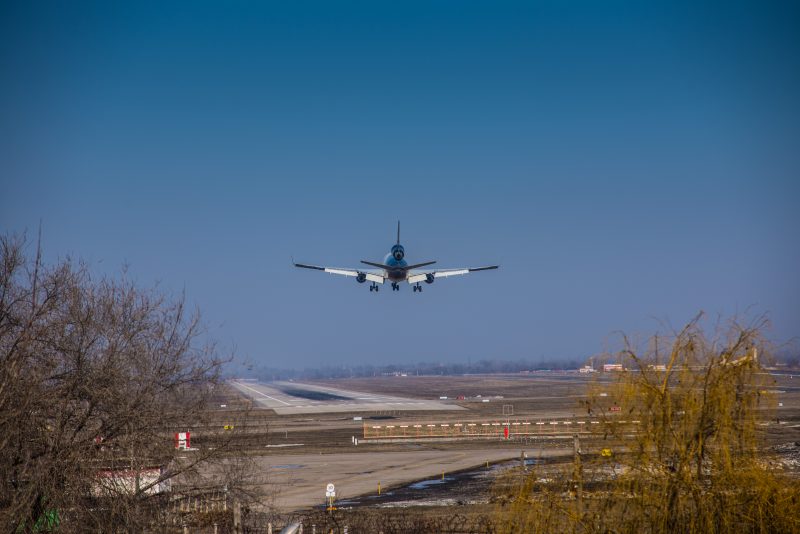Flying Schools Can Fast-Track Your Pilot Career
 Pursuing a career as an international airline pilot is an ambitious and rewarding goal. The path to becoming a pilot involves rigorous training, significant financial investment, and a deep commitment to mastering the skills required for the job. Among the various steps and choices on this journey, one of the most crucial decisions is selecting a flying school. Flying schools are specialized institutions that provide the foundational training necessary for aspiring pilots. This article explores the pivotal role that flying schools play in fast-tracking an international airline pilot career, focusing on how they streamline the training process, enhance career prospects, and prepare you for a successful career in aviation.
Pursuing a career as an international airline pilot is an ambitious and rewarding goal. The path to becoming a pilot involves rigorous training, significant financial investment, and a deep commitment to mastering the skills required for the job. Among the various steps and choices on this journey, one of the most crucial decisions is selecting a flying school. Flying schools are specialized institutions that provide the foundational training necessary for aspiring pilots. This article explores the pivotal role that flying schools play in fast-tracking an international airline pilot career, focusing on how they streamline the training process, enhance career prospects, and prepare you for a successful career in aviation.
Significance of flying schools in pilot training
Flying schools are integral to the process of becoming a professional pilot. They offer a structured environment where students can receive comprehensive training to meet the stringent requirements set by aviation authorities. Here’s how flying schools contribute to accelerating your path to becoming an international airline pilot:
1) Structured and efficient training programs
The structured training programs of flying schools are designed to streamline the process of obtaining various pilot licenses and certifications. The training typically follows a well-defined curriculum that includes theoretical instruction, flight training, and simulator practice.
-
- Private Pilot License (PPL): The initial stage involves acquiring a Private Pilot License, which is the foundation for further training. Flying schools offer programs that ensure students meet the requirements for the PPL efficiently, including a minimum number of flight hours and successful completion of written exams.
- Commercial Pilot License (CPL): After obtaining a PPL, the next step is the Commercial Pilot License. Flying schools provide specialized training to prepare students for the CPL, focusing on advanced flight maneuvers, navigation, and flight operations. The structured nature of these programs helps students progress through their training more quickly.
- Instrument and multi-engine ratings: To operate a commercial aircraft, pilots need additional ratings, such as instrument and multi-engine ratings. Flying schools offer tailored training for these qualifications, ensuring that students acquire the necessary skills and experience to handle complex flight scenarios.
- Airline Transport Pilot License (ATPL): The ATPL is required to command commercial airliners. Flying schools offer comprehensive programs that prepare students for the ATPL written exams and provide the required flight experience through structured flight hours and simulator sessions.
The structured approach of flying schools helps students efficiently complete the training requirements, reducing the overall time needed to become a licensed pilot.
2) Access to state-of-the-art facilities
Modern flying schools are equipped with advanced facilities that enhance the learning experience and accelerate training. These facilities include:
-
- Flight simulators: High-fidelity flight simulators are a crucial component of pilot training. They replicate real-world flying conditions and allow students to practice various flight maneuvers, emergency procedures, and complex scenarios in a controlled environment. Access to state-of-the-art simulators enables students to gain valuable experience and build confidence without the risks associated with actual flight training.
- Training aircraft: Flying schools maintain a fleet of training aircraft that are used for hands-on flight instruction. These aircraft are equipped with modern avionics and safety features, providing students with the opportunity to learn on equipment similar to what they will encounter in the professional aviation industry.
- Classroom facilities: Theoretical instruction is an essential part of pilot training. Flying schools provide well-equipped classrooms where students can learn about aviation regulations, meteorology, navigation, and aircraft systems. This structured educational environment helps students absorb and retain the necessary knowledge effectively.
3) Experienced and qualified instructors
One of the most significant advantages of attending a flying school is access to experienced and qualified instructors. These professionals bring a wealth of knowledge and real-world experience to their teaching, providing valuable insights into the aviation industry.
-
- Expertise in training: Experienced instructors are adept at teaching complex concepts and providing practical flight training. Their expertise ensures that students receive high-quality instruction and are well-prepared for their exams and flight tests.
- Industry insights: Instructors often have extensive backgrounds in the aviation industry, including experience as airline pilots. They can offer valuable advice on career progression, job search strategies, and the specific skills required for international flying.
- Mentorship: Beyond technical instruction, instructors serve as mentors who can guide students through the challenges of flight training and career development. Their support can be instrumental in helping students navigate the path to becoming an international airline pilot.
4) Comprehensive curriculum
Flying schools offer a comprehensive curriculum that covers all aspects of pilot training. This curriculum includes:
-
- Theoretical knowledge: Students learn about aviation principles, regulations, navigation, meteorology, and aircraft systems. A solid understanding of these subjects is essential for safe and efficient flight operations.
- Flight training: Hands-on flight training is a core component of the curriculum. Students practice flight manoeuvres, emergency procedures, and flight planning under the guidance of experienced instructors.
- Simulator training: Flight simulators are used to enhance training by allowing students to practice complex scenarios and emergency situations in a controlled environment.
- Additional courses: Many flying schools offer supplementary courses, such as Crew Resource Management (CRM) and advanced flight techniques, to further enhance students’ skills and knowledge.
A comprehensive curriculum ensures that students receive well-rounded training, preparing them for the various challenges of a career in international aviation.
5) Career support and networking opportunities
Flying schools often provide career support services to help students transition from training to employment. These services may include:
-
- Job placement assistance: Many flying schools have partnerships with airlines and aviation organizations, which can facilitate job placements for graduates. Schools may also offer job boards, career fairs, and networking events to connect students with potential employers.
- Internships and cadet programs: Some flying schools offer internship or cadet programs in collaboration with airlines. These programs provide students with practical experience and a direct pathway to employment with partnering airlines.
- Networking: Flying schools often have a network of alumni and industry contacts that can be valuable for job searching and career advancement. Networking events and professional connections can help students learn about job opportunities and gain insights into the aviation industry.
6) Customised training paths
Recognizing that each student has unique career goals, flying schools often offer customized training paths. These paths may include:
-
- Specialised training: For students aiming to work for specific airlines or operate certain types of aircraft, flying schools can tailor their training programs to focus on the relevant skills and certifications.
- Accelerated programs: Some schools offer accelerated training programs for motivated students who want to complete their training more quickly. These programs are intensive and require a significant time commitment but can help students enter the workforce faster.
- Career counselling: Customised training paths may also include career counselling services to help students identify their career goals and develop a plan to achieve them.
7) Regulatory and certification support
Navigating the regulatory and certification process can be complex. Flying schools provide essential support to ensure that students meet all the requirements for licensing and certification.
-
- Regulatory guidance: Flying schools are familiar with the regulations and requirements set by aviation authorities. They provide guidance on meeting these requirements and help students prepare for exams and flight tests.
- Certification assistance: Schools assist with the paperwork and administrative tasks associated with obtaining pilot licenses and certifications. This support helps streamline the process and reduces the stress associated with regulatory compliance.
8) Financial considerations
While pilot training is a significant financial investment, flying schools often offer options to help manage the costs.
-
- Financing options: Many flying schools offer financing options or payment plans to help students manage the cost of training. Scholarships and grants may also be available for eligible students.
- Cost-benefit analysis: When choosing a flying school, it’s important to consider the overall value of the training provided. Investing in a reputable school with high-quality facilities, experienced instructors, and comprehensive support can lead to a faster and more successful career progression.
Choosing the right flying school
Selecting the right flying school is a critical decision that can impact your career trajectory. When evaluating flying schools, consider the following factors:
- Reputation: Research the school’s reputation within the aviation industry. Look for reviews from former students and check if the school has any affiliations with airlines or aviation organisations.
- Accreditation: Ensure the school is accredited by relevant aviation authorities and adheres to industry standards.
- Facilities: Assess the quality of the facilities, including aircraft, simulators, and classrooms. Modern, well-maintained equipment is crucial for effective training.
- Instructor experience: Investigate the qualifications and experience of the instructors. Experienced, knowledgeable instructors can make a significant difference in your training.
- Career support: Evaluate the school’s career support services, including job placement assistance, internships, and networking opportunities.
- Cost and financing: Consider the cost of the training programs and available financing options. While quality education is an investment, it’s essential to find a program that fits your budget.
Choosing the right flying schools
Flying schools play a crucial role in fast-tracking your international airline pilot career by providing structured training programs, access to advanced facilities, experienced instructors, and comprehensive support. By offering a well-rounded education and career assistance, flying schools help aspiring pilots efficiently navigate the complex path to becoming a professional aviator.
Choosing the right flying school is a significant decision that can influence your career progression and success in the aviation industry. By carefully evaluating your options and selecting a school that aligns with your goals and needs, you can accelerate your journey to becoming an international airline pilot and embark on a rewarding career in the skies.










